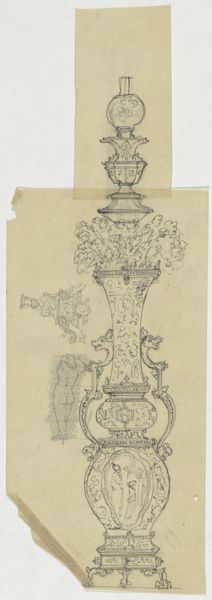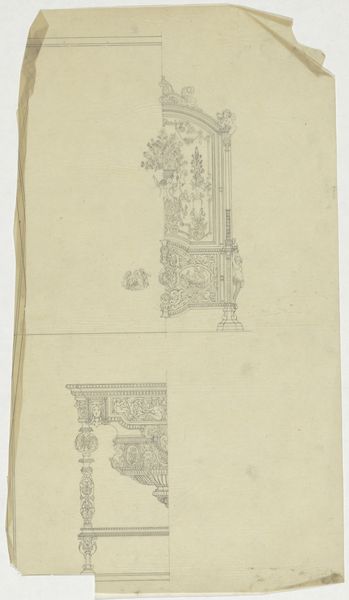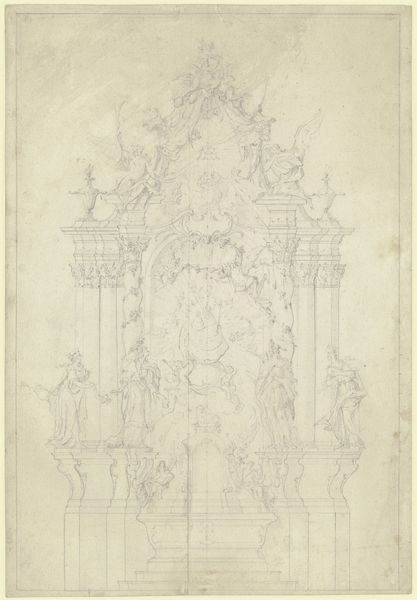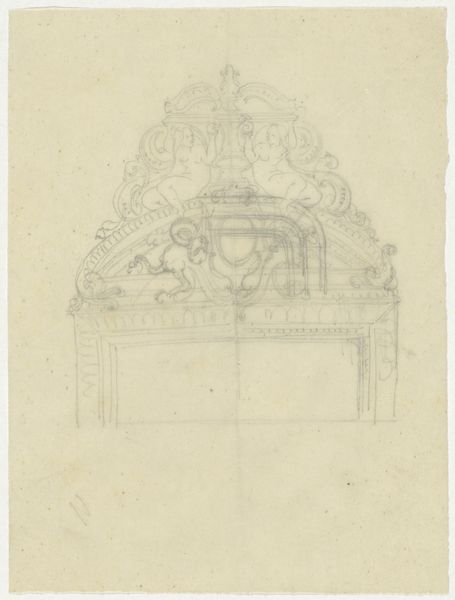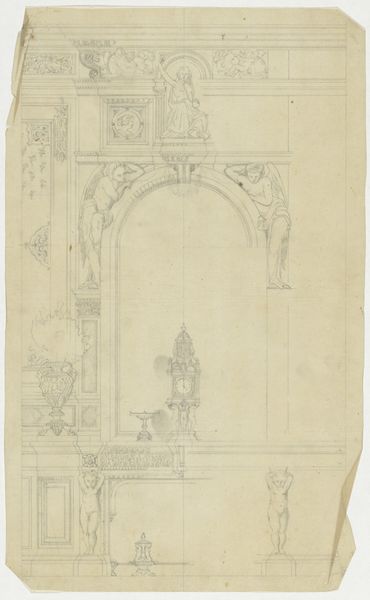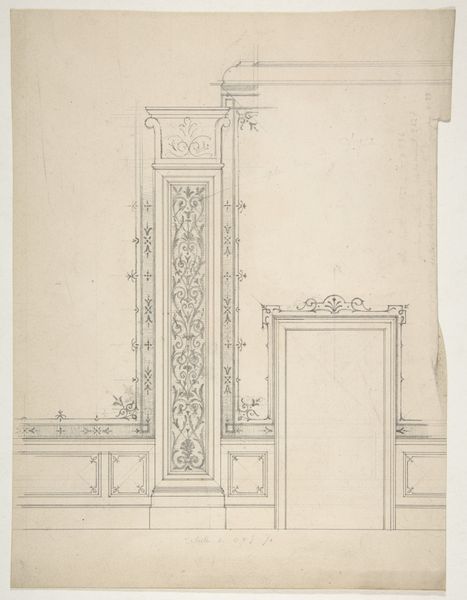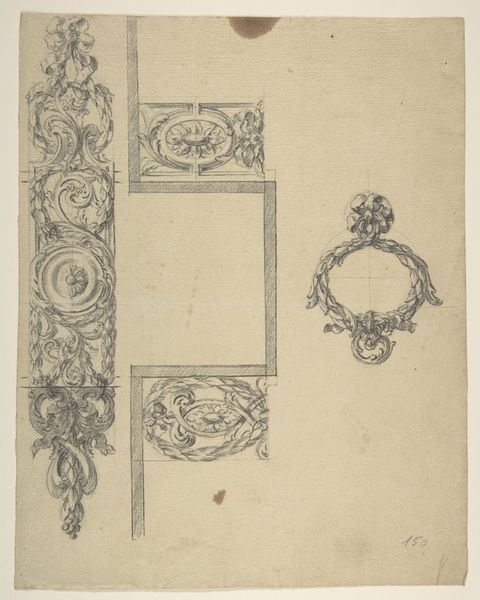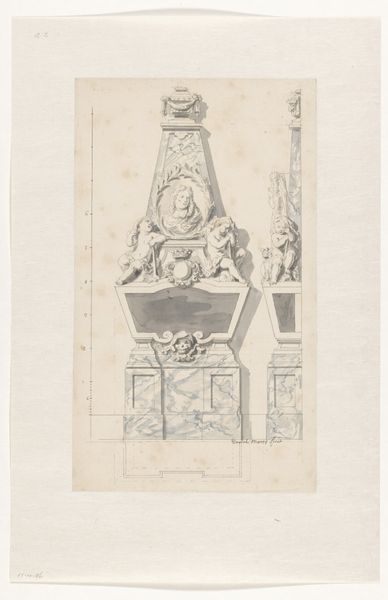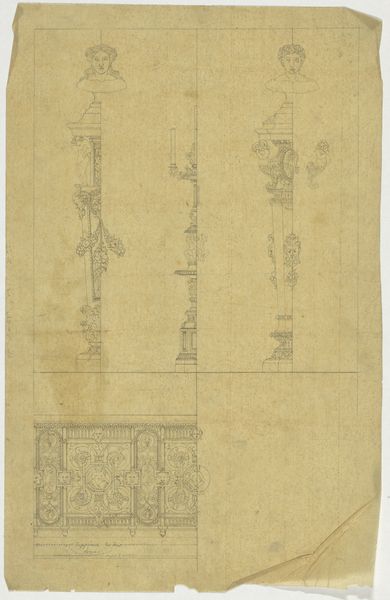
drawing, paper, ink
#
drawing
#
aged paper
#
toned paper
#
quirky sketch
#
old engraving style
#
paper
#
personal sketchbook
#
ink
#
geometric
#
pen-ink sketch
#
ink colored
#
line
#
pen work
#
sketchbook drawing
#
academic-art
#
sketchbook art
Dimensions: height 149 mm, width 367 mm
Copyright: Rijks Museum: Open Domain
Editor: Here we have Firma Feuchère's "Tafelfontein," created sometime between 1830 and 1850. It's an ink drawing on paper, with what looks like an incredibly ornate fountain design depicted. It has such a delicate, almost dreamlike quality because it looks aged, incomplete, but also meticulously planned. What strikes you about this piece? Curator: It's intriguing how this drawing engages with the political undercurrents of design during that period. Consider the 19th century’s fascination with elaborate ornamentation and revival styles. Don’t you think the inclusion of classical motifs on this design is indicative of something? Editor: Possibly a yearning to reclaim past grandeur? It seems almost escapist. Curator: Exactly! And think about the context: The Industrial Revolution was transforming society, leading to anxieties about lost craftsmanship and traditions. Tafelfontein can be viewed as a deliberate counterpoint, a visual assertion of artistic heritage. Look at the medium itself: Why drawing, rather than, say, an oil painting for example? Editor: Maybe drawing suggests planning and precision. An aspirational blueprint rather than a finished monument? Curator: Precisely. It points towards a specific understanding of how art could be employed. Drawings like this weren't just aesthetic exercises, they played a role in defining cultural identity. Editor: So, this meticulous fountain drawing reflects socio-political tensions within 19th-century society, reclaiming grandeur amidst industrial anxieties. That perspective changes my understanding. Curator: Indeed! Recognizing how these historical and cultural forces shape our viewing experience truly elevates it.
Comments
No comments
Be the first to comment and join the conversation on the ultimate creative platform.
